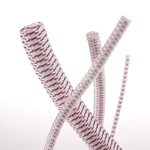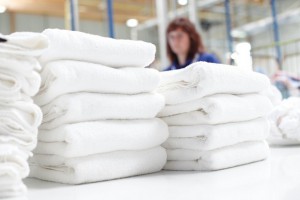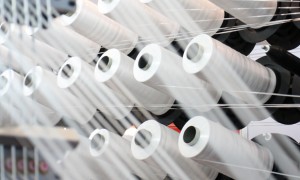Technical textiles in engineered products are a resource for new product development and product improvement that is just waiting to be embraced. James Lorbiecki argues that those willing to explore the possibilities may be pleasantly surprised at the outcome and view textiles in a whole new way.
Imagine a fighter pilot flying ‘just another sortie’ when things go horribly wrong. A split-second decision is made; one hard pull of the firing handle launches the pilot out of the dying aircraft, landing safely on the ground in as little as 3 seconds, attached to a billowing parachute. Martin-Baker Aircraft Company has been designing and manufacturing ejection seats since 1949 and to date over 7,373 lives have been saved worldwide. Textiles constitute nearly 19% of the entire weight of an ejection seat. Without technical textiles, not one of these lives would have been saved.
Technical textiles have been part of the aviation industry from the very beginning – starting out as the fabric covering the airframe, evolving into the reinforcements now vital to composite airframes, and other important roles such as ejection seat components. Most individuals who work with ejection seats rarely take notice of the sophistication of the textiles and the role they play in the seat’s performance.
Textiles in general maintain a low or diminished profile. This form of material is one of the earliest engineered products, having been around since the stone age. It was the development of textiles that provided the spark that triggered the Industrial Revolution. Each of us is in intimate contact with textile products every day of our lives from cradle to grave. This familiarity renders us almost blind to the multitude of functions that textiles provide. In industrial applications, textiles tend to be left out of the toolbox of problem-solving materials, often because they are not on a CAD system drop-down menu of materials.
Technical textiles is the term used to describe textiles that are constructed for their properties and function, rather than their appearance (although appearance can often be a factor). Textiles come in a multitude of knit, woven or fibrous forms including rope, cord, thread, netting, fabric, webbing, wadding and three-dimensional shapes. Textiles offer a high degree of functionality, weight reduction, and cost saving if applied and engineered properly. New textiles developments are coming fast and furious, offering the possibilities of replacing metal and plastic with stronger, lighter and often cheaper alternatives. Think of an industry and textiles will play some part in it. Engineers often unknowingly employ technical textiles in the form of drive belts, composite materials, filters, insulation, hydraulic hose and a myriad of other applications. The overt and intentional use of textile product is usually avoided mainly due to a lack of education and exposure to its benefits. Textiles are barely covered in the typical engineer’s education. However, for those willing to explore the potential there may be great reward.
Some of the high performance fibres now available are as much as ten times stronger than any steel of the same weight. Many can function in temperatures from -270ºC to 650ºC or higher. Some textiles can be used as a flexible insulation, replacing their rigid predecessors with a third of the original thickness and weight. Textiles often combine characteristics to provide design solutions unobtainable by rigid metals and plastics. For instance, the shrapnel-resistant shielding in jet aircraft engines is made from textile – an application where no other material would provide a practical engineered solution. Personal protection in the form of seatbelts, airbags, clothing, body armor, etc. is dominated by technical textiles as the material of choice.
Textiles can be engineered to be hydrophilic or hydrophobic, fire retardant, electrically conductive or insulative, visible or invisible to radar or infrared, physically expand when stretched (auxetic), energy absorptive or reflective, stiff or highly flexible – the possibilities are endless. Textiles are often thought of as being a flat product: this is far from the reality of modern textiles. Textile manufacturers can form three-dimensional shapes or multi-layered products through CNC production equipment. Assembly techniques such as sewing, bonding, and welding have also made technological advances well beyond what is normally imagined resulting in even more textile design possibilities.
When considering textiles for the first time in a product, it may be a daunting task – where do you begin? Firstly, open your eyes! Look around and see where textiles are used in our world. Consider your product and how textiles may benefit its design. If you have an inkling of an idea but do not know how to proceed, there is help at hand. Most technical textile manufacturers are more than eager to guide the product designer through the world of textiles – it is in their best interest. Companies such as Arville Textiles, AmSafe, and Baltex, as well as a host of others, have a wealth of experience and are willing to discuss and nurture your ideas. In the case of Martin-Baker, textile suppliers form an integral part of the engineering team; often they are involved in design development and product reviews. Books available from The Textile Institute and Woodhead Publishing can provide further information and resources into the world of technical textiles.
This article comes from industrial-technology edit released


